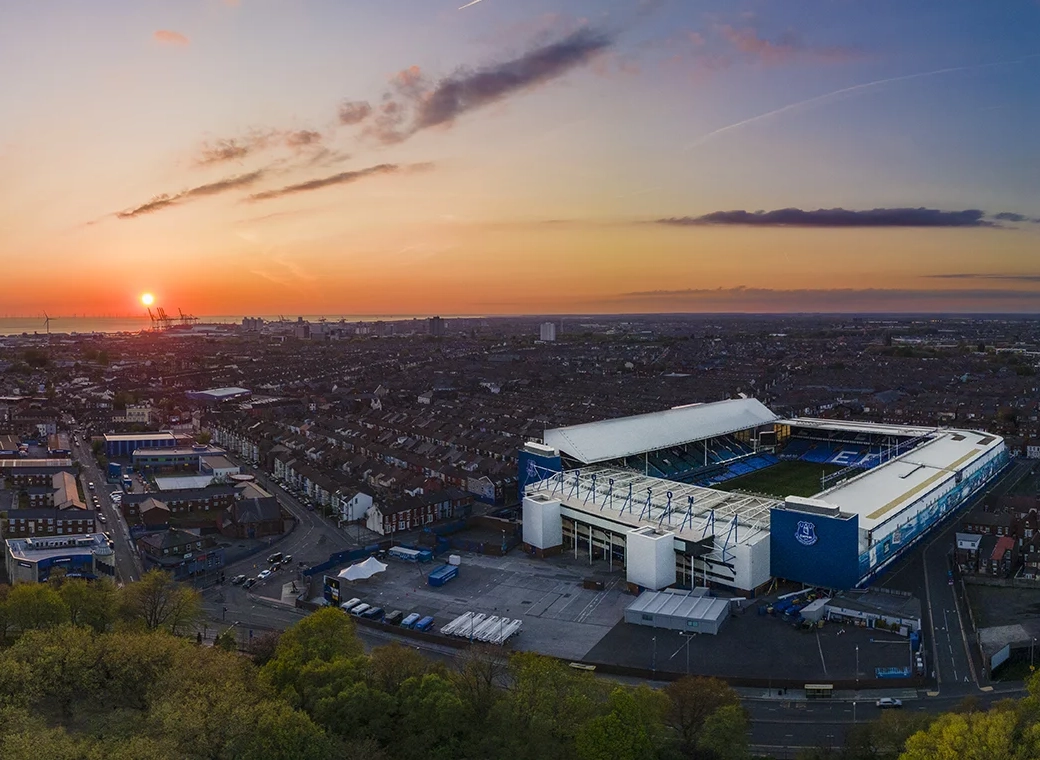they could have but that badge is already out of date.Re the brickwork: look at what Villa will be doing in terms of a pattern - the club's badge. Our East Stand could have done that with our badge and made that a fitting statement of who we are and where we come from.
View attachment 207213
You are using an out of date browser. It may not display this or other websites correctly.
You should upgrade or use an alternative browser.
You should upgrade or use an alternative browser.
davek
Player Valuation: £150m
This was the earlier plan for the North Stand from autumn 2020....My assumption is the other way around. The club wanted a big home end...but that takes up more horizontal space than a normal stand and the site is constrained N-S. So the small stand is the compromise for having the big home end.
If you keep the roof more or less the same height all round, you're obviously then left with a load of space at the back of the small stand. So my guess is Meis thought 'why not stick a huge screen there?'
For some reason, in later iterations that was replaced by the (WHL style!) screens at each end instead.
But the point is, I'm pretty sure the "biggest screen in Europe" was something that emerged from the necessary compromise in the layout. It was not the cause of it - that was the big home end combined with the site constraints
TrailerTrash
Player Valuation: £15m
May simply be construction access, and now building pretty much up, they can dig a big pit.Is it strange that we're just seeing it now?
davek
Player Valuation: £150m
Pardon my ignorance, but a big pit for what purpose?May simply be construction access, and now building pretty much up, they can dig a big pit.
Bluerover
Player Valuation: £60m
Was there for a friendly years back 4 nil win IIRC.
Was freezing that night.
I was there myself. Tried to get shelter on the sea-side of the ground as on the oppposite side the wind blows straight into your face.
Lovely club though - Joe Bollard a legendary Bray fan and a fanatical Evertonian too.
The binman chronicles
Player Valuation: £80m
My assumption is the other way around. The club wanted a big home end...but that takes up more horizontal space than a normal stand and the site is constrained N-S. So the small stand is the compromise for having the big home end.
If you keep the roof more or less the same height all round, you're obviously then left with a load of space at the back of the small stand. So my guess is Meis thought 'why not stick a huge screen there?'
For some reason, in later iterations that was replaced by the (WHL style!) screens at each end instead.
But the point is, I'm pretty sure the "biggest screen in Europe" was something that emerged from the necessary compromise in the layout. It was not the cause of it - that was the big home end combined with the site constraints
The screens are the same size both ends so the dip has nothing to do with it. They sit in front of the roof structure.
As you say to create a bigger home end they had to sacrifice the other.
TrailerTrash
Player Valuation: £15m
They need a storage area for grey water, drainage, etc, for times when the flow rate is too much to go wherever the hell it is going. A buffer sort of situation. I think this one is for the water treatment works as it's on that side. I'll try to find the video I saw on it.Pardon my ignorance, but a big pit for what purpose?
(Assuming that's what it is. I could be completely wrong)
Davideeyore
Player Valuation: £35m
My assumption is the other way around. The club wanted a big home end...but that takes up more horizontal space than a normal stand and the site is constrained N-S. So the small stand is the compromise for having the big home end.
If you keep the roof more or less the same height all round, you're obviously then left with a load of space at the back of the small stand. So my guess is Meis thought 'why not stick a huge screen there?'
For some reason, in later iterations that was replaced by the (WHL style!) screens at each end instead.
But the point is, I'm pretty sure the "biggest screen in Europe" was something that emerged from the necessary compromise in the layout. It was not the cause of it - that was the big home end combined with the site constraints
Spot on.
TrailerTrash
Player Valuation: £15m
They need a storage area for grey water, drainage, etc, for times when the flow rate is too much to go wherever the hell it is going. A buffer sort of situation. I think this one is for the water treatment works as it's on that side. I'll try to find the video I saw on it.
(Assuming that's what it is. I could be completely wrong)
tommye
Player Valuation: £120m
From another forum

badloaf
Player Valuation: £6m
Dumping the red [Poor language removed] in on derby day.Pardon my ignorance, but a big pit for what purpose?
tommye
Player Valuation: £120m
We now have a river for that.Dumping the red [Poor language removed] in on derby day.
BullensRoad
Player Valuation: £35m
My assumption is the other way around. The club wanted a big home end...but that takes up more horizontal space than a normal stand and the site is constrained N-S. So the small stand is the compromise for having the big home end.
If you keep the roof more or less the same height all round, you're obviously then left with a load of space at the back of the small stand. So my guess is Meis thought 'why not stick a huge screen there?'
For some reason, in later iterations that was replaced by the (WHL style!) screens at each end instead.
But the point is, I'm pretty sure the "biggest screen in Europe" was something that emerged from the necessary compromise in the layout. It was not the cause of it - that was the big home end combined with the site constraints
could be worse, could have ended up with a blue emirates with a jarg Marseille stand and half the faculties for NFL.
The binman chronicles
Player Valuation: £80m
could be worse, could have ended up with a blue emirates with a jarg Marseille stand and half the faculties for NFL.
I don't think Rob is dissing BMD in his post and it is churlish to attack their stadium as by and large it is the best in the country.
Double Negative
Player Valuation: £950k
You’re not mixing up Kharkiv with AZ Alkmaar are you? That was cold but Kharkiv was pretty warm, I was wearing short sleeves…Kharkiv was something else. Absolutely something else, I dont think it's ever been as cold on the planet.









